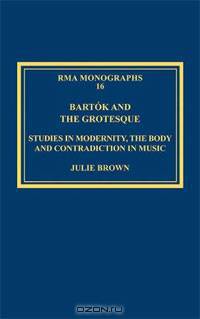Поиск книг, учебников, пособий в онлайн-магазинах

Bartok and the Grotesque
Автор: Julie Brown, 192 стр., издатель: "Ashgate Publishing", ISBN: 0754657779The grotesque is one of art's most puzzling figures - transgressive, comprising an unresolvable hybrid, generally focussing on the human body, full of hyperbole, and ultimately semantically deeply puzzling. In "Bluebeard's Castle" (1911), "The Wooden Prince" (1916/17), "The Miraculous Mandarin" (1919/24, rev. 1931) and "Cantata Profana" (1930), Bartok engaged scenarios featuring either overtly grotesque bodies or closely related transformations and violations of the body. In a number of instrumental works he also overtly engaged grotesque satirical strategies, sometimes - as in "Two Portraits": "Ideal" and "Grotesque" - indicating this in the title.In this book, Julie Brown argues that Bartok's concerns with stylistic hybridity (high-low, East-West, tonalatonal-modal), the body, and the grotesque are inter-connected. While Bartok developed each interest in highly individual ways, and did so separately to a considerable extent, the three concerns remained conceptually interlinked. All...
| Под заказ: | ||||
|
|
OZON.ru - 10467 руб. |
Перейти 
|
||
Рейтинг книги: 


 4 из 5, 1 голос(-ов).
4 из 5, 1 голос(-ов).



 4 из 5, 1 голос(-ов).
4 из 5, 1 голос(-ов).



